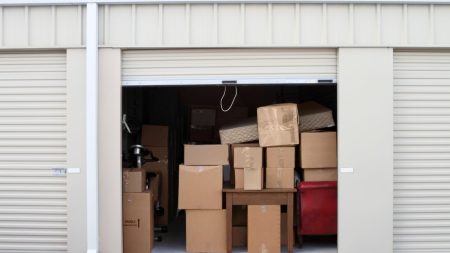Key takeaways
- Using savings to fund renovations avoids the extra expense of interest and accumulation of debt, and encourages sticking to a budget. But it depletes cash reserves and may mean postponing a project.
- Borrowing for renovations allows for immediate project commencement, can strengthen credit history, and frees up funds for other goals. But it involves paying interest, increases your debt burden, and could potentially risk the home (if used as collateral for the loan).
- Finance options for repairs and remodels include home equity loans/HELOCs, cash-out refinances, home improvement or renovation loans, home equity sharing agreements and zero-interest credit cards.
While home improvement is less hot than in pandemic days, It’s still going to be a big year for breaking ground: Americans will spend $451 billion on residential remodeling this year, the Joint Center for Housing Studies at Harvard University projects.
If you’re planning to contribute to that collective price tag, the big question is — how to pay for it. Renovations rarely come cheap: More than half of remodeling homeowners spent $25,000 or more on their projects in 2023, according to the 2024 U.S. Houzz and Home Study, a survey of 33,830 homeowners. So, should the money come from your bank account? Or should you borrow it instead?
Both options have their pros and cons. The best route depends on a range of factors – how much the project costs, how much is in your savings, how comfortable you are with debt, and your other needs and plans. Let’s look more closely into the paying for home renovations debate, and whether savings or financing works best.
$18,000
The average annual cost of owning and maintaining a single-family home in the U.S. is more than $18,000 a year — 26% higher now compared to four years ago
Source:
Bankrate Hidden Costs of Homeownership Study
Using savings to pay for your renovation
Why would you use your savings to cover homeownership expenses like maintenance, repairs and upgrades? The answer is simple: You won’t rack up any debt, a rising concern for many households these days. Bankrate’s recent Credit Card Debt Survey found that 49 percent of credit card holders are carrying a credit card balance from month to month — an increase from 39 percent in 2021. Of those carrying a credit card balance from month to month in 2024, 39 percent have carried that balance at least two years.
Also, you’ll save money — because financing isn’t free. “Even assuming you could get a low interest rate on your loan, it will not be lower than the amount you get paid in your savings [account],” says Robert Persichitte, an associate faculty member at Metropolitan State University of Denver.
A low rate isn’t likely these days. Over the last two years, interest rates have risen on all types of consumer debt, as the Fed fights to contain inflation. Even home equity loans and HELOCs (home equity lines of credit) — traditionally a less-expensive tool, because they use your home as collateral — are not the bargain they used to be, with rates currently hovering around 9 percent.
In addition to avoiding debt, dipping into ready money can keep you disciplined in your spending. Nearly 40 percent of renovating homeowners went over budget on their projects in 2023, according to the 2024 Houzz and Home Study, and buying more expensive products or materials was a key reason. Sticking to savings for the remodel is essentially a form of cash-stuffing budgeting: You allot an amount to the project, and when the money runs out, you’re done.
For all these reasons, “If you have cash sitting around, it’s a no-brainer to use the cash instead of financing,” Persichitte says.
A savings success story: one Bankrate staffer’s experience
When John Puterbaugh and his wife began thinking about remodeling their Charlotte, N.C. home’s kitchen in late 2021, he knew he didn’t want to pour funds into a top-of-the-line renovation. “By keeping expenses low with a more modest upgrade, it will be easier to benefit from a future sale,” Puterbaugh, a Bankrate’s senior director of editorial, figured.
Bankrate insights
It may seem counterintuitive, but less-expensive renovations often offer a greater return on investment at home resale time than pricey ones. According to trade publication Remodeling’s “2024 Cost vs. Value Report,” a major kitchen remodel with midrange materials recoups nearly 50 percent of its costs, vs. only 38 percent for one with upscale materials.
To pay for those expenses, Puterbaugh initially planned to cover half with savings while financing the other half of the $20,000 project on a Lowe’s Advantage Card, using its 18-month, zero-percent financing option to avoid any interest. The credit limit was too low for the new kitchen project, but Puterbaugh secured a sizable increase by calling Synchrony — the issuing bank — to outline his needs, update his annual income and verify his credit utilization ratio.
Then, supply chain issues created a silver lining. The project took so long due to the backup caused by the pandemic that Puterbaugh and his wife managed to save the full amount. (He kept the new higher-limit card anyway, opting to use its five percent discount on purchases instead of the financing option.)
The experience has reinforced Puterbaugh’s belief in minimizing borrowing costs and for delaying a project, if need be, to build up the bank account. Even “if I’m going to finance something,” he says, “I want to have that same amount of cash in my emergency fund for my own sanity.”
Still, he recognizes that the ability to save that much isn’t an option for everyone. “What I would have done 15 years ago is far different from what I have been able to do over the last five years,” Puterbaugh says. “I have become smarter with money, but I have also enjoyed the privilege of making more money.”
83%
Percent of renovating homeowners who pay for projects with cash savings. Credit cards are a distant second, at 37%
Source:
2024 Houzz and Home Study
Borrowing the money for your renovation
While taking on debt isn’t at the top of anyone’s to-do list, the reality is, the typical bank account isn’t big enough to cover the costs of a major project: Data from the Federal Reserve pegs the average savings account balance at just over $62,400. And even if yours is, there’s a lot to be said for remaining liquid. Draining your savings to zero to finish your basement, add on to your property or invest in other big upgrades or repairs means you won’t have any cushion left over to safeguard your finances in a worst-case scenario.
“Make sure you keep a healthy emergency fund,” Persichitte says. “Have three to six months’ worth of expenses on hand.” Should a sudden expense or loss of income occur, “you don’t want to get into credit card debt [to cover essentials] because you spent cash on your renovation.”
Although some find it synonymous with “overspending” and “can’t afford it,” borrowing can be a savvy strategy.
“Financing allows you to preserve your savings for other needs or investment opportunities,” Justin Haywood, CFP, president and co-founder of Haywood Wealth Management in Houston, Texas, says. “Opportunity cost must always be considered, and by not tying up your savings in a home renovation, you have the potential to invest those funds elsewhere.” You may even be able to grow that money at a rate that outpaces the interest rate on the loan, especially if it’s a tax-advantaged retirement account.
Haywood also points out that debt isn’t necessarily a bad thing, either — provided it’s responsibly handled, of course. “Financing the project can help diversify your credit mix, which can positively impact your credit score over time,” he says. In particular, “adding a HELOC or home equity loan to your profile introduces a different type of credit, which is beneficial for overall credit health.”
Borrowing with a backup: one man’s story
For homeowners debating whether to dip into savings or explore financing options for a major home renovation, it doesn’t have to be an either-or answer. When Brian Millis, a 40-year-old management consultant in Carmel, Indiana, decided to move forward with plans for a full first floor remodel of his family’s four-bedroom, two-and-a-half bath home, he decided to split the six-figure project cost between savings and a home equity line of credit with a current 8.25 percent interest rate.
“The HELOC can stay open for 10 years, and I’m only paying interest during that time,” says Millis. “I’m optimistic that rates will go down while I’m still paying against it and give me an opportunity to refinance.”
He didn’t just plunge into debt, though. Prior to hiring a designer to develop the remodel, which will take between four and six months, Millis built up his emergency fund to double what he and his wife thought they might need to make sure they and their three children felt secure. In addition to being able to access the line of credit to cover approximately half of the project expenses now, he views the HELOC as a financial backstop.
“In a worst-case scenario, if I get uncomfortable about not having all that cash savings, I can bring funds over from the HELOC for any expenses,” Millis says.
Savings vs. financing a home remodel: pros and cons
Using savings for renovations
Pros
- You won’t rack up any debt, or increase your current debt load.
- You may be more budget-conscious since the money has to come from your account.
- You won’t impact your credit score since you aren’t applying for any loans.
Cons
- You’ll deplete your savings.
- You may need to delay the project to save up enough.
- You might compromise investing/saving for other long term goals.
Pros and cons of borrowing for renovations
Pros
- You can start the project just as soon as you get funding.
- You’ll have money to direct to other goals and needs, such as paying for college or retirement.
- You can strengthen your credit history in the long-term with on-time payments, demonstrating responsible handling of debt.
Cons
- You’re using your home as collateral for the loan, which carries significant risk (home equity loans).
- You’ll be paying interest, increasing the overall project cost.
- You’ll be increasing your debt-to-income ratio, which weakens your financial profile, and could see a credit score drop.
Ways to finance home renovations
Home equity loans and home equity lines of credit (HELOC): If you have built up a sizable stake in your property, home equity loans and HELOCs are both viable options for your project. There are some nuances that differentiate the two lending options, but they both use your home as collateral. In addition to lower interest rates than unsecured loans or credit cards, both offer tax-deductible interest, provided you itemize deductions on your return.
Cash-out refinance: If you don’t want to deal with a second mortgage – which is what a home equity loan or HELOC will be – you can explore a cash-out refinance instead. You’ll replace your existing mortgage with a new loan that has a bigger balance, and you take the difference out in ready money. The major downside here: Most homeowners have mortgage rates that are significantly lower than today’s cash-out refinance rates. If you’re among them, your new mortgage will be more expensive.
Home renovation loans: Offered by government agencies or government-sponsored entities, the FHA 203(k) program, the Freddie Mac CHOICERenovation and the Fannie Mae HomeStyle Renovation let you renovate or simultaneously buy/refinance and renovate a residence all with the same big loan. Terms and qualifying criteria are generous, but the paperwork and process can get involved, and not all kinds of remodels are covered.
Home equity sharing agreement: Some companies will let you borrow money today based on the property’s future value (and presumably appreciation). While the upside with these arrangements is that you won’t have any monthly payments, the biggest drawback is that you will have to make a large payment many years later. And if/when you sell the home, a portion of those proceeds will go to the company – not you.
Credit cards: Zero-interest credit cards allow you to finance a project without ever paying finance charges. Free money — under one condition: You have to pay off everything before the introductory period ends, generally around 18 to 24 months. Otherwise, your project is going to cost a lot more due to the double-digit rates that characterize credit card debt.
Home improvement loans: These are essentially souped-up personal loans, which can make them easier and quicker to get than home equity financing. But there are some major downsides to consider. If your credit isn’t in great shape, you can wind up paying excessively high interest rates, and many of these loans come with significantly shorter repayment terms than home equity loans and HELOCs.
How to pick the best payment method for home renovations
How to determine if you should use savings or finance — and if the latter, how to borrow? Ask yourself these questions.
- How much are you planning to spend? The higher the costs are, the more likely you’ll need to explore options for financing. ”If it is a small and relatively inexpensive project, then using cash may be a practical and easy choice,” says CFA Michael Collins, founder/CEO of WinCap Financial, a Massachusetts-based registered investment advisory firm. “However, for larger and more costly renovations, such as adding an extension or remodeling multiple rooms, financing options may provide more flexibility in terms of budget and timeline.” Even if you have the means, coming up with sizable five- or six figures in cash could severely strap you, and lose you interest-earning potential on your funds.
- How much home do you own? While home equity loans and HELOCs can be good options for major projects, they’re only available if you have accumulated a significant amount of equity — that is, own a good amount of your home outright. Estimate how much your house is worth versus how much you own on your primary mortgage to get a sense of how much you might be able to borrow – with the caveat that most lenders will only allow you to take up to 80 or 90 percent of your equity stake.
- How quickly can you pay it back? If you’re confident that you can repay the money within a credit card’s zero APR introductory period — roughly two years — you may be able to borrow it essentially interest-free. If you’re focused on a longer repayment period, however, a home equity loan or HELOC’s 10- to 20-year repayment term will likely be better for your finances.
- How urgent is the project? Some repairs simply can’t wait — or it turns out that, rather than a quick fix, a major replace-and-remodel makes more sense. If you’re dealing with such a surprise, you may be forced to borrow: In fact, 19 percent of homeowners say they’ve taken on debt to pay for unexpected home repairs, according to Bankrate’s Hidden Costs of Homeownership Survey. A personal loan, which you can get relatively quickly, might be best here — or a HELOC, which allows you to withdraw funds as you need them. If the repair gets covered by homeowners insurance, you could then use those funds to settle either debt.
Bottom line on savings vs. financing home renovations
The best way to pay for home renovations? “There is no right or wrong answer,” as Puterbaugh points out. Rather, it’s a personal decision, with variables ranging around your time frame and your means, the size of the project and the size of your savings account. And of course, your comfort level with debt.
All things being equal, if you can pay for the project out-of-pocket — and it won’t leave you “house rich, cash poor” — it’s probably best to do so. However, if you need to borrow, it’s not necessarily bad news, and could even work to your advantage. There are plenty of options that can fit your financial needs, plans and budget, including the one that Millis took: using a combination of savings and financing. Whatever works to make the remodel happen, boosting both the enjoyment and the equity in your home.
Read the full article here
















